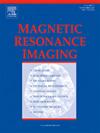Relationships between diffusion tensor parameters and measures of skeletal muscle fiber size and strength after anterior cruciate ligament injury
IF 2
4区 医学
Q2 RADIOLOGY, NUCLEAR MEDICINE & MEDICAL IMAGING
引用次数: 0
Abstract
Alterations in skeletal muscle morphology after an anterior cruciate ligament (ACL) tear are a major contributing factor to protracted quadriceps muscle weakness limiting person's return to function. Microstructural changes in skeletal muscle are difficult to assess noninvasively, but understanding these changes is vital to provide clinicians with additional information to assess injury and guide recovery.
The purpose of this study was to evaluate the potential of magnetic resonance diffusion tensor imaging to provide noninvasive metrics of quadriceps muscle morphology and strength. Following a primary ACL tear and prior to surgical reconstruction, 44 individuals underwent bilateral isometric knee extension testing, vastus lateralis muscle biopsies, and diffusion tensor magnetic resonance of the thighs. Significant between limb differences were identified for quadriceps strength, fractional anisotropy, mean diffusivity, radial diffusivity, pooled fiber cross-sectional area, and pooled fiber minimum feret diameter. Fractional anisotropy and radial diffusivity were significantly associated with isometric knee extension peak torque for both limbs, after adjusting for mass. Fractional anisotropy was also significantly associated pooled cross-sectional area in the ACL-deficient limb only, after adjusting for mass. Our findings suggest that fractional anisotropy, mean diffusivity, and radial diffusivity can differentiate between the vastus lateralis of an ACL-injured limb and the healthy limb. Additionally, fractional anisotropy exhibited relationships with both measures of vastus lateral muscle fiber size and quadriceps strength for the ACL-deficient limb. These finding suggest that measures of diffusivity may be used cross-sectionally to infer between limb differences after an ACL-injury and that FA may be used to infer knee extensor strength.
前交叉韧带损伤后骨骼肌纤维大小和强度与弥散张量参数的关系。
前交叉韧带(ACL)撕裂后骨骼肌形态的改变是导致长时间股四头肌无力限制人恢复功能的主要因素。骨骼肌的微观结构变化很难无创评估,但了解这些变化对临床医生提供额外的信息来评估损伤和指导康复至关重要。本研究的目的是评估磁共振弥散张量成像在提供股四头肌形态和力量的无创指标方面的潜力。在原发性前交叉韧带撕裂和手术重建之前,44例患者进行了双侧等距膝关节伸展试验、股外侧肌活检和大腿弥散张量磁共振。四肢之间在股四头肌强度、分数各向异性、平均扩散系数、径向扩散系数、池纤维横截面积和池纤维最小直径方面存在显著差异。在调整质量后,分数各向异性和径向扩散率与四肢的等距膝关节伸展峰值扭矩显著相关。经质量调整后,分数各向异性也仅与acl缺失肢体的汇集横截面积显著相关。我们的研究结果表明,分数各向异性、平均弥散度和径向弥散度可以区分acl损伤肢体和健康肢体的股外侧肌。此外,分数各向异性显示出与acl缺失肢体的股外侧肌纤维大小和股四头肌力量的关系。这些发现表明,弥散度的测量可以在横断面上推断acl损伤后肢体之间的差异,而FA可以用来推断膝关节伸肌力量。
本文章由计算机程序翻译,如有差异,请以英文原文为准。
求助全文
约1分钟内获得全文
求助全文
来源期刊

Magnetic resonance imaging
医学-核医学
CiteScore
4.70
自引率
4.00%
发文量
194
审稿时长
83 days
期刊介绍:
Magnetic Resonance Imaging (MRI) is the first international multidisciplinary journal encompassing physical, life, and clinical science investigations as they relate to the development and use of magnetic resonance imaging. MRI is dedicated to both basic research, technological innovation and applications, providing a single forum for communication among radiologists, physicists, chemists, biochemists, biologists, engineers, internists, pathologists, physiologists, computer scientists, and mathematicians.
 求助内容:
求助内容: 应助结果提醒方式:
应助结果提醒方式:


